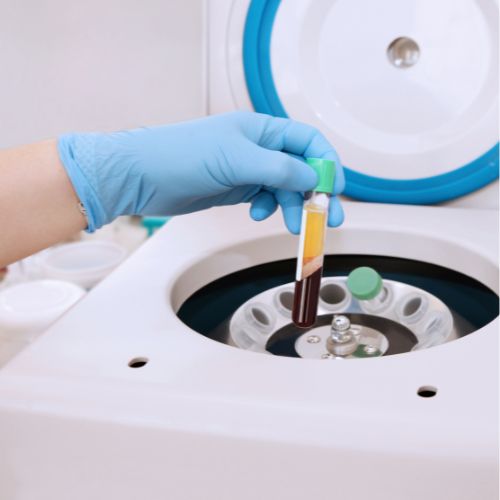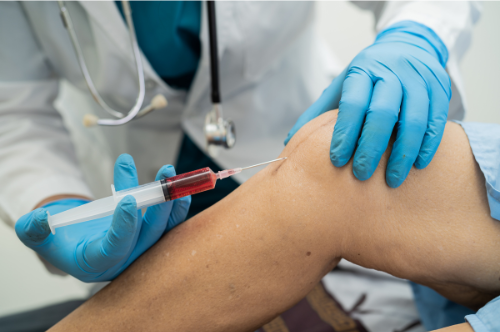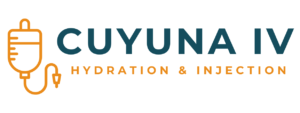A PATIENT’S GUIDE TO HEALING
Healing after an injury relies on a well-orchestrated and complex series of events where proteins in the blood act as messengers to regulate the entire process. Many proteins involved in the healing process are derived from platelets— small, colorless cell fragments that circulate freely through the bloodstream.
When an injury occurs, platelets become activated and rush to gather at the damaged site where they release beneficial proteins called growth factors that stimulate tissue repair. This is the beginning of the healing process.
Interest in using components directly at the site of injury to accelerate healing has been growing for many years. New research and developing technology are continually expanding the applications of this therapy for:
- Muscle/tendon injuries
- Ligament sprains/tears
- Tendonitis
- Bursitis
- Osteoarthritis
What is platelet-rich plasma (PRP)?
You can think of platelets as the body’s first responders when an injury happens. After things get stabilized these first responders turn into healers by releasing growth factors that help repair the damaged tissue. A PRP injection concentrates platelets and places them where they are needed. It is a little like delivering a helicopter load full of these first responders/healers to the site of injury or pain.
Or, to put it more technically. The increased levels of growth factors released from PRP have the potential to stimulate the repair process and speed healing. PRP is a highly concentrated solution of a patient’s own platelets that is injected to a site of injury where it may induce the release of growth factors and stimulate rapid healing.1
-
Lynch SE, Nixon JC, Colvin RB, Antoniades HN. Role of platelet-derived growth factor in wound healing: synergistic effects with other growth factors. Proc Natl Acad Sci USA. 1987;84:7696-7700. doi:10.1073/pnas.84.21.769.

How does the PRP process work?
Your health care provider will withdraw a small amount of blood from a vein in your arm. This sample is placed in a centrifuge, where it undergoes a high-speed spinning process that separates and concentrates the platelets and other beneficial growth factors from other blood components. It is then injected to a site of injury where it may induce the release of growth factors and stimulate rapid healing. The entire PRP production process is usually done in less than 30 minutes.

Am I a candidate for PRP treatment?
- Schedule a free consultation to ask if this treatment is right for you.
- We’ll go over your history and the planned site of injection to see if PRP therapy will benefit you.
- If you are taking anti-inflammatory medications or blood thinners, you may need to coordinate with your physician about temporarily stopping them until your treatment has taken place. If unable to stop them, PRP will be unlikely to provide its full benefit.
